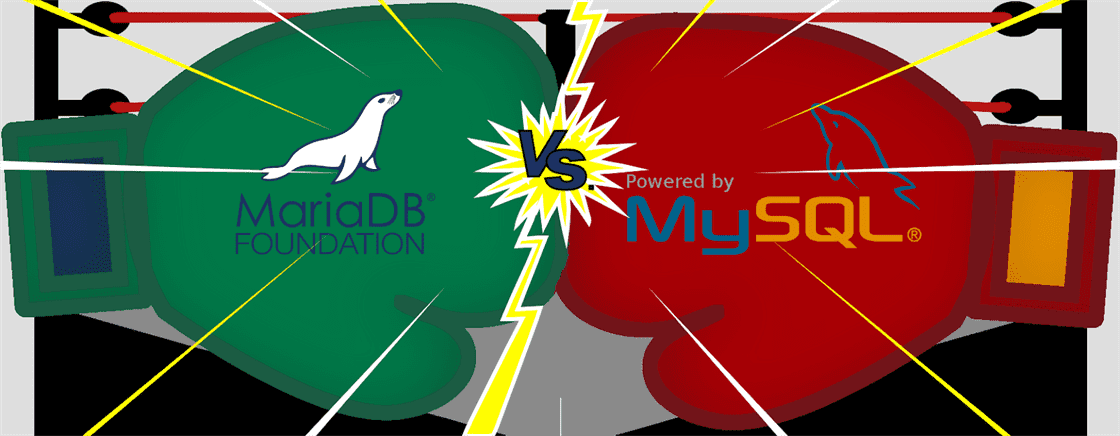Category: Series
The Series category provides accurate and in-depth information regarding a variety of topics and subjects. Because these subjects tend to be larger and take longer to read and study, we breaking the info into more manageable chunks to ensure it is easily digestible by everyone.
MySQL Performance: System Config & Routine Maintenance
The majority of work needed when adjusting the MySQL server is editing the applicable directives within a MySQL configuration file. There are multiple, optional configuration files that MySQL looks for when starting up. They are read in the following order:
MySQL Performance: Converting MySQL to MariaDB
As we explored in our previous article of our MySQL Performance Series: MySQL vs. MariaDB there are very few downsides to using MariaDB over standard MySQL. Our high-availability MariaDB's have proven itself to be a worthy successor with easily mitigated drawbacks. As the last article in our series we will focus on upgrading to various MySQL and MariaDB version on the following servers:
MySQL Performance: MySQL vs. MariaDB

We continue our series on MySQL Optimization by focusing on the differences and similarities between MariaDB and MySQL. MariaDB is a popular alternative to using traditional MySQL for database hosting. The free market of hosting allows additional actors to compete with the long-standing database solution, MySQL. MariaDB is the most prominent alternative to MySQL and is a favorite among industry giants such as Google, Craigslist, Wikipedia, Arch Linux, RedHat, CentOS, Fedora, and cPanel. In a direct performance comparison, MariaDB leaps to the head of the pack through performance optimizations, easy of conversion and compatibility.
Our previous article in this series focused on defining and fitting MPM to match your environment. Building from our last tutorial we will be discussing specific details on how to adjust the previously mentioned Apache configuration directives on the various types of Liquid Web VPS servers as well as Core managed servers.
Apache Performance Tuning: MPM Directives
How directives behave and which directives are mainly available hinges on the loaded MPM. As discussed in our previous series, MPM is short for MultiProcess Modules, and they determine the basis for how Apache addresses multiprocessing. Using our last article on Apache MPM Modules as a springboard, we will use this section to cover the following subsections:
Apache Performance Tuning: MPM Modules
The keystone for understanding Apache server performance is by far the Multiprocessing Modules (MPMs). These modules determine the basis for how Apache addresses multiprocessing. Multiprocessing means running multiple operations simultaneously in a system with multiple central processing units (CPU Cores).
MySQL Performance: MyISAM vs InnoDB
A major factor in database performance is the storage engine used by the database, and more specifically, its tables. Different storage engines provide better performance in one situation over another. For general use, there are two contenders to be considered. These are MyISAM, which is the default MySQL storage engine, or InnoDB, which is an alternative engine built-in to MySQL intended for high-performance databases. Before we can understand the difference between the two storage engines, we need to understand the term “locking.”
Use Disk Quotas in Dedicated Linux Servers for Plesk Servers
Using Disk Quotas on Plesk Servers
Plesk servers come in a variety of underlying operating systems like: Windows, CentOS and Ubuntu VPS's as well as dedicated servers. These systems address disk quotas in different ways. However, they all use the same tools within the Plesk interface. Plesk servers can assign quotas on an individual domain basis or through the Service Plans & Subscriptions system. We will go over both of these methods below.
How to Use Disk Quotas in Dedicated cPanel Servers
Using Disk Quotas on a cPanel Dedicated Server
cPanel Servers
Before we can take full advantage of disk quotas, we must first initialize them. cPanel makes enabling Disk Quotas on our servers as easy as point and click.
In the previous few articles we installed the WHMCS plugin and configured it with the VPS API. This article will cover the fun part, actually using the plugin to create new cloud based products! We’ll go over the plugin’s “Product Setup Wizard”, which makes it easy to create new products based on our Cloud VPS, Cloud Dedicated VPS, and Private Cloud products.
Our Sales and Support teams are available 24 hours by phone or e-mail to assist.

